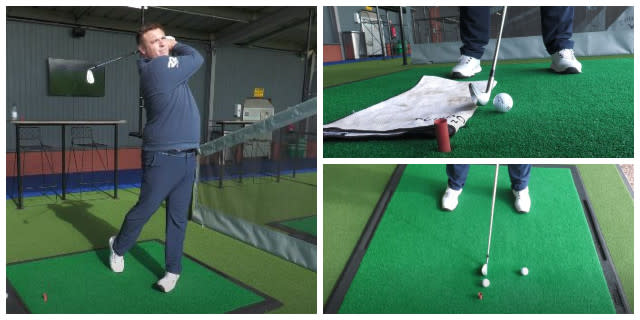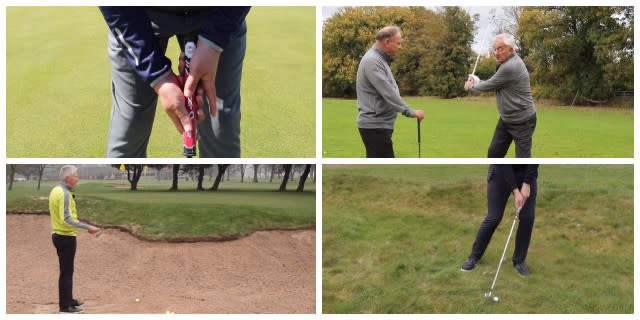One Club-Length or Two?
Post from rules expert, Barry Rhodes writer of '999 questions on the rules of golf'
I am often asked if there is an easy way to remember when the Rules of Golf require that you drop within one club-length or two club-lengths. Here is a good ‘rule of thumb’;
When you are entitled to free relief it is one club-length and when you incur a penalty it is two club-lengths.
To expand on this, when you take free relief under the Rules, e.g. from an immovable obstruction, casual water, ground under repair, wrong putting green, or a staked tee (if there is a Local Rule), you must drop within one club-length of the reference point, the nearest point of relief that is not nearer the hole. Whereas, when you are taking a penalty drop, e.g. from an unplayable lie, or in taking relief from a lateral water hazard, you must drop within two club-lengths from the reference point, not nearer the hole (see below).
For your convenience here is a list of all the Rules references to one club-length;
• Rule 24-2b: The player may take relief from immovable obstructions.
• Rule 25-1b: The player may take relief from abnormal ground conditions (e.g. casual water or ground under repair).
• Appendix l, Part B, 2b, lll (a): Local Rule may give relief from environmentally-sensitive areas, so as to protect them.
• Appendix l, Part B, 3: Local Rule may give relief from young (usually staked) trees, so as to protect them.
• Rule 25-3b: If a player’s ball lies on a wrong putting green, he must take relief,
Note: In these five situations the player must lift their ball and drop it, without penalty, within one club-length of and not nearer the hole than the nearest point of relief.
• Rule 20-3b: Except in a hazard, if the original lie of a ball to be placed or replaced has been altered the ball must be placed in the nearest lie most similar to the original lie that is not more than one club-length from the original lie, not nearer the hole and not in a hazard.
And a list of all the Rules references to two club-lengths;
• Definition of teeing ground: The teeing ground is a rectangular area two club-lengths in depth.
• Rule 20-2c(vi): A drop is invalid and the ball must be dropped again if it rolls and comes to rest more than two club-lengths from where it first struck a part of the course.
• Rule 26-1c: In taking relief from a lateral water hazard, under penalty of one stroke, the player may take the option of dropping a ball outside the hazard within two club-lengths of and not nearer the hole than (i) the point where the original ball last crossed the margin of the water hazard or (ii) a point on the opposite margin of the water hazard equidistant from the hole.
• Rule 28c: Having deemed their ball unplayable, under penalty of one stroke, the player may take the option dropping their ball within two club-lengths of the spot where the ball lay, but not nearer the hole.
• Appendix l, Part A, 5.d: A Local Rule may give relief without penalty to a player if their ball lies through the green and an immovable obstruction (e.g. a sprinkler head), that is on or within two club-lengths of the putting green and within two club-lengths of the ball, intervenes on the line of play between their ball and the hole.
So, how long is a club-length? The answer is that it can be the length of the longest club that you are carrying in your bag, which typically is a driver. However, there is nothing in the Rules that says that you must use the club to accurately measure the distance. Providing it is obvious that you have dropped the ball within the required area, the drop is valid and the ball is in play if it comes to rest within two club-lengths of where it first hit the course, not nearer the hole than where it was originally at rest. If you do carry a very long-handled putter in your bag there is nothing in the Rules that specifically prohibits using it to measure club-lengths, but I urge you not to do so, as in my opinion, it is against the spirit of the game.
As always, good golfing,
Article from Barry Rhodes author of the book, ‘999 Updated Questions on the Rules of Golf 2012 - 2015’
Barry is author of the book, ‘999 Updated Questions on the Rules of Golf 2012 - 2015’ and writes a regular blog of miscellaneous content on the rules of Golf at www.barryrhodes.com
Related Content:





















